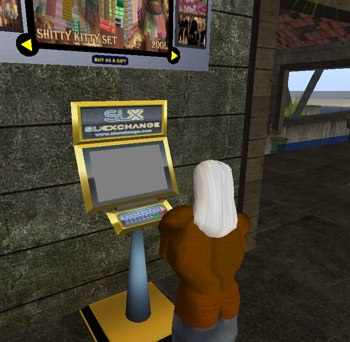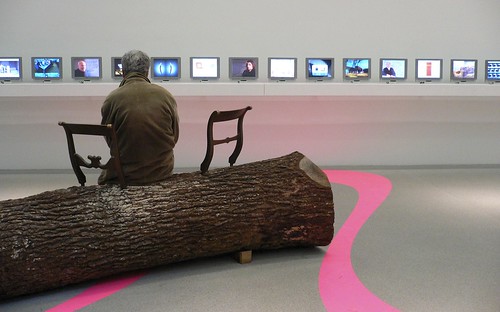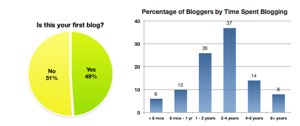[warning -- some of the links provided here may lead to material objectionable to some]
I’m back in the U.S. after almost a week in Asia. So it’s understandable that I got up at 2:30 in the morning. I’m hopeful that I will easily re-aclimate myself to a Western Hemisphere mode of time, as I did manage to stay up until 9:30 last night watching something on TV, though I have no recollection of what it was.
I glanced at e-mail, my aggregator, and then set out to do some research, my K12 Online Conference presentation due soon (if not overdue :-/). Wanting to make this a learning experience for me, I’m thinking about doing my presentation as a machinima. It would be my first, and I may decide, after working it a bit, to just pull out the trusty video camera and walk around town again.
First of all, I still consider myself a real Second Life Newb. I’ve been there since April 2006, but not regularly enough to really get a hang of the place. It’s like me and my SLR camera. On the rare occasions that I have a chance to use it, I have to re-train myself. Very frustrating. So, I looked for some info on making machinima, especially in Second Life? (See RSS listing to the left), identified a few tools necessary. But I’d also like to bring in some images and multimedia, and although most SL-using educators seem to be adept at multimedia delivery, I’ve never done it before. If I have, I forgot how.
So here begins the adventure in learning for me. I found, early on, a free tool called Zebra Presenter, open source, and available at the Zebra HK site [SL link] in SL. There I found a scene set up for a variety of presentations. The site appears to cater to businesses who are looking for space for virtual presentations. But I could not find the product there. So I went back to Google and found a web page or blog entry devoted to the product with the link,
Pick up your FREE copy at SLXchange
Here I find links to videos demo’ing Presenter and a four minute tutorial. But what really connected was that I was in the SL>Exchange, where you go to exchange real life currency for linden dollars. Again, I’m a newbie, so forgive me if this excitement seems overblown to you. But it’s another of those first realizations of an intersection between the real and the virtual — like the first time you printed a word-processed document into the real world with a dot-matrix printer. Look it up!

So here is the Market Place, where I searched for house, and found this very quaint haunted house for $610 Lindens ($2.85). There is also the Currency Exchange, where you can buy Lindens or sell them. This page also include exchange rate information and this graph that I almost understand. There is also land for sale and an auction center.
So here, I can buy my own Zebra Presenter for L$0 (free). I have to first establish an account with the SLExchange that connects to my Second Life avatar, Suriawang Dapto. So I click Register, fill in the form, and this validate — and here’s were it gets interesting. I go to my e-mail, find the message just sent by SLExchange, and the link takes me to the instructions,
Using this Second Life? avatar: Suriawang Dapto Find any SL Exchange Terminal and type in open chat: validate <passcode hidden>
 I go back to SL, and search for SL Exchange Terminal. I get 670 hits, most of them landmarks, clicking into the first one — ready to bolt at a moment’s notice. To the right is the scene I find, not what you’d expect, looking for a virtual ATM machine. But I wonder in and found the terminal fairly easily, being very careful not to look closely at the pictures on the walls.
I go back to SL, and search for SL Exchange Terminal. I get 670 hits, most of them landmarks, clicking into the first one — ready to bolt at a moment’s notice. To the right is the scene I find, not what you’d expect, looking for a virtual ATM machine. But I wonder in and found the terminal fairly easily, being very careful not to look closely at the pictures on the walls.
Standing at the terminal, I typed into my chat box,
validate <the code>
After a moment the machine chatted back that my validation was successful.
 I returned to the catalog page for the Zebra Presenter, ordered it, and received the message that the order had been submitted and that the item would be delivered. Climbing back into Second Life, I had a notecard saying that I had received the product. Opening my inventory — there it was.
I returned to the catalog page for the Zebra Presenter, ordered it, and received the message that the order had been submitted and that the item would be delivered. Climbing back into Second Life, I had a notecard saying that I had received the product. Opening my inventory — there it was.
Now I continue to find this whole thing more than strange. But paying money for virtual experiences in an immersive environment, able to interact with other people, through their avatars, is not, when you get right down to it, all that different from paying nine dollars at the local movie theater to watch a two-hour movie. In fact, from an educational point of view, the manipulative and social environment holds infinitely more potential.
Still, it’s a lot for a 30+ year educator to wrap his mind around. But I’m getting there.
 Here’s another one. ScreenNation, of the American File Institute, just announced a new Challenge,
Here’s another one. ScreenNation, of the American File Institute, just announced a new Challenge, 







 I go back to SL, and search for SL Exchange Terminal. I get 670 hits, most of them landmarks, clicking into the first one — ready to bolt at a moment’s notice. To the right is the scene I find, not what you’d expect, looking for a virtual ATM machine. But I wonder in and found the terminal fairly easily, being very careful not to look closely at the pictures on the walls.
I go back to SL, and search for SL Exchange Terminal. I get 670 hits, most of them landmarks, clicking into the first one — ready to bolt at a moment’s notice. To the right is the scene I find, not what you’d expect, looking for a virtual ATM machine. But I wonder in and found the terminal fairly easily, being very careful not to look closely at the pictures on the walls. I returned to the catalog page for the Zebra Presenter, ordered it, and received the message that the order had been submitted and that the item would be delivered. Climbing back into Second Life, I had a notecard saying that I had received the product. Opening my inventory — there it was.
I returned to the catalog page for the Zebra Presenter, ordered it, and received the message that the order had been submitted and that the item would be delivered. Climbing back into Second Life, I had a notecard saying that I had received the product. Opening my inventory — there it was.

 By way of
By way of